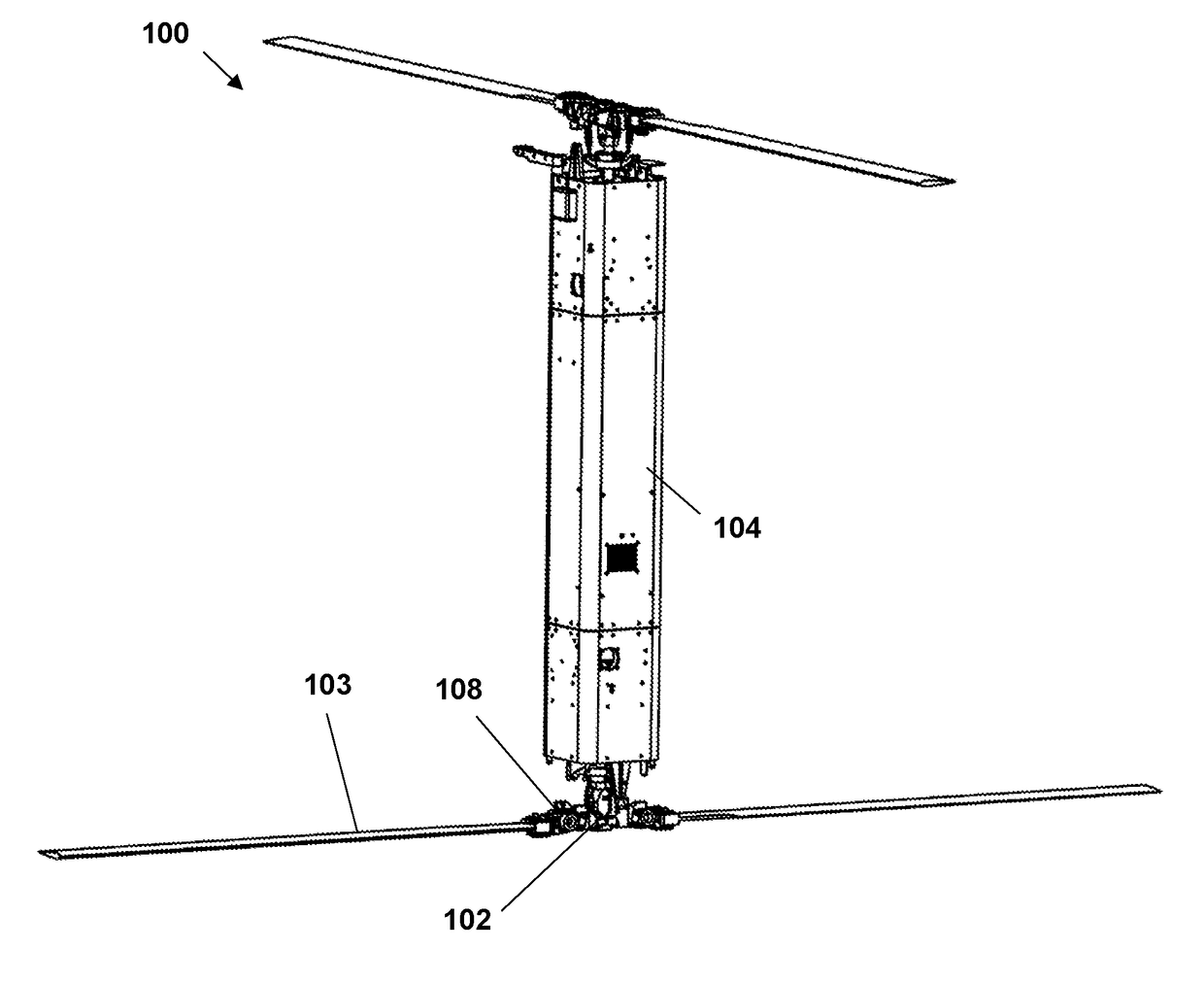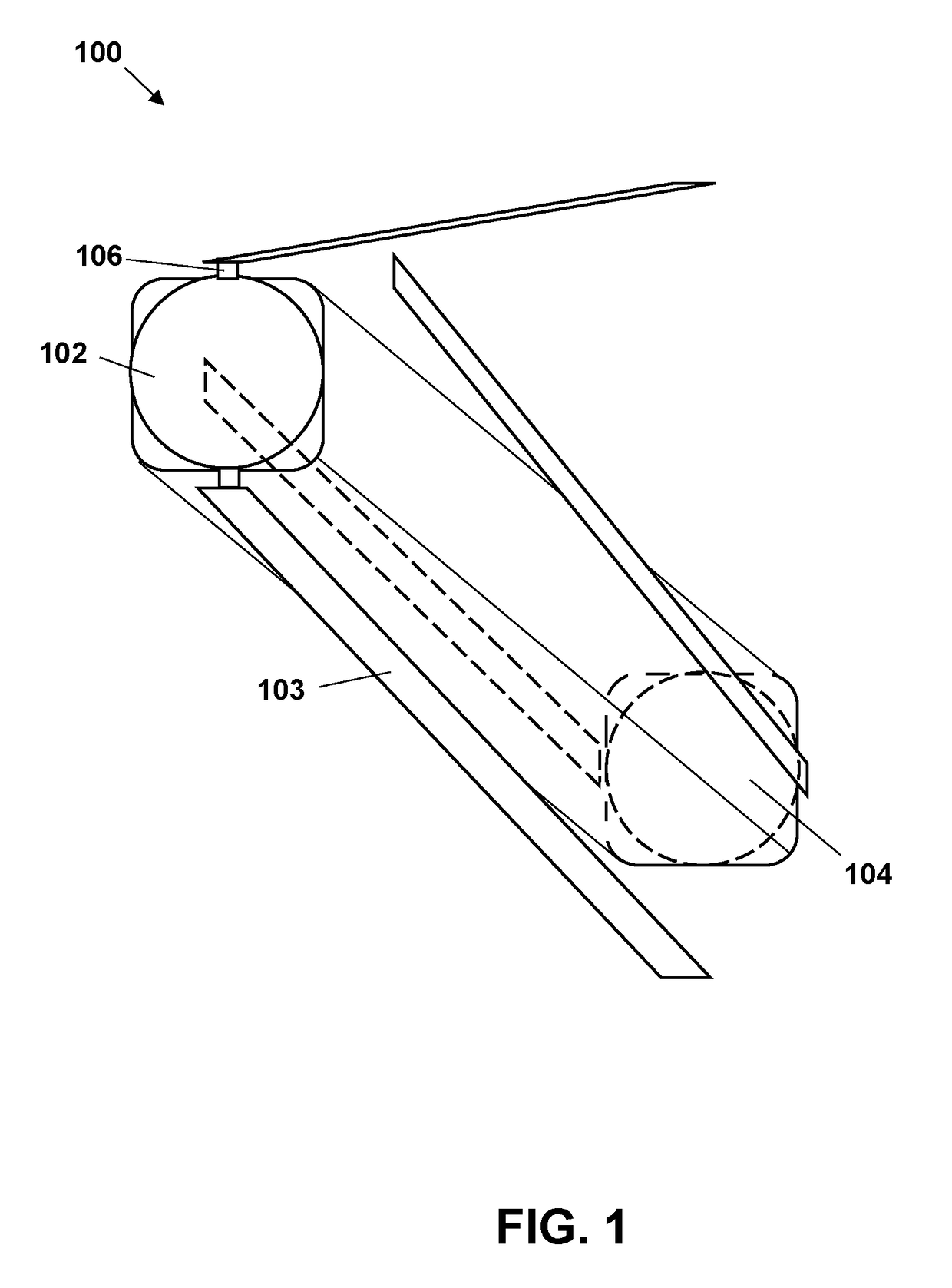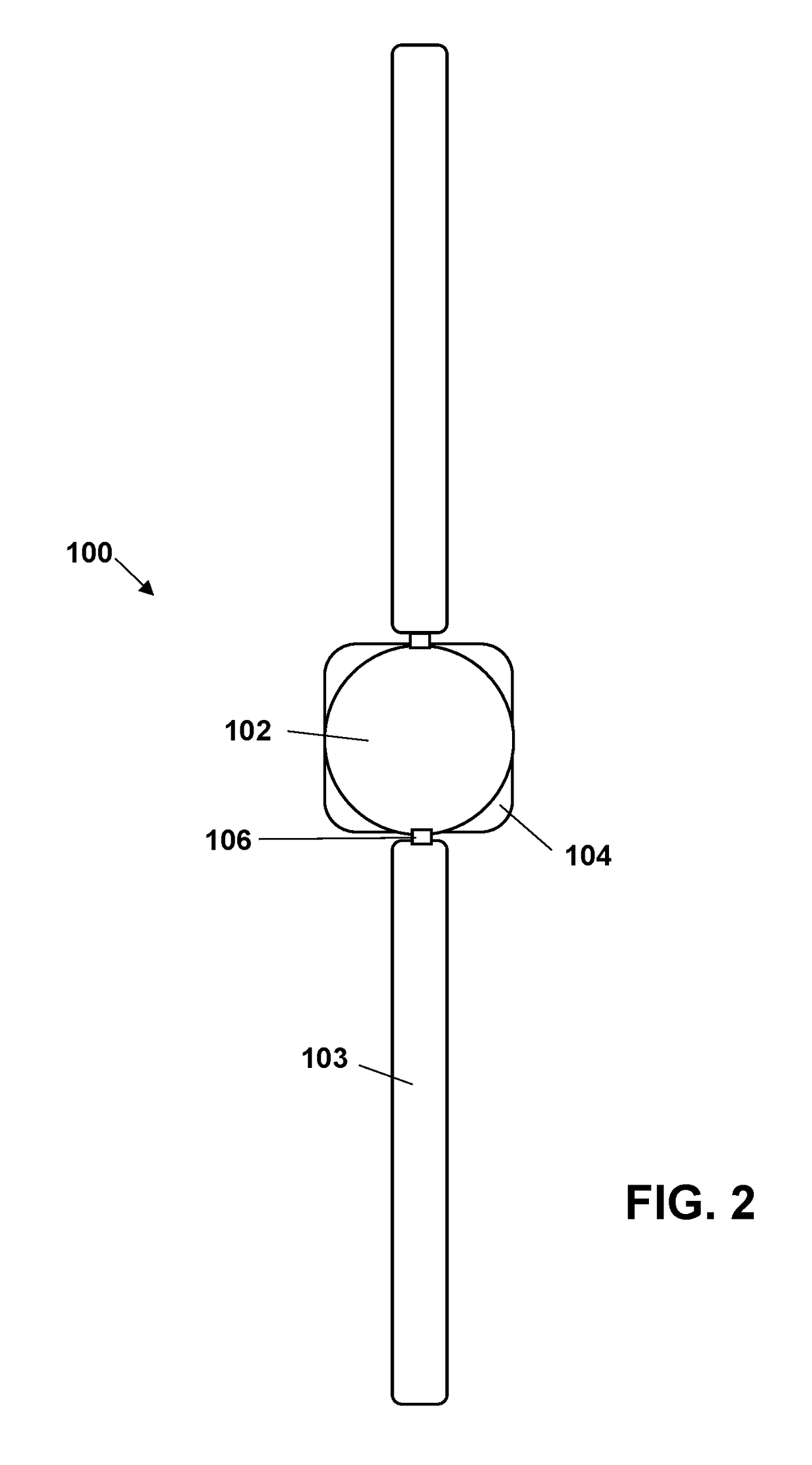Vertically Oriented Tube-Launchable Rotary Wing Aircraft Having Respective Rotors at Opposite Ends of Main Body
a technology of vertical orientation and rotors, which is applied in the field of unmanned vehicles, can solve the problems of inefficient use of space by conventional rotary wing craft deployed from tubes, high stall speed of tube-launched fixed-wing aircraft, and inability to hover over a point of interest or maintain position with respect to a slow moving object, etc., to achieve maximum payload volume and weight, and maximize the effect of volum
- Summary
- Abstract
- Description
- Claims
- Application Information
AI Technical Summary
Benefits of technology
Problems solved by technology
Method used
Image
Examples
Embodiment Construction
[0029]Shown schematically in isometric view in FIG. 1, top view in FIG. 2, and side view in FIG. 3, an exemplary rotary wing aircraft 100 include counter-rotating coaxial rotors 102—each having, preferably, two blades 103—located at opposite ends of a, preferably square (more preferably square with rounded corners), fuselage / body 104 that fold at hinged joints 106 along the length of the body to efficiently fit in a round tube. Torsion springs 108, shown in FIG. 4, located at the folding pivot help pull the blades when launched out of the tube. The blades can be held in place by the tube or with a servo mechanism (not shown) if desired to be able to keep the blades stowed after exiting the tube. The rotor system at each end of the aircraft is nearly identical with its own electric motor, transmission, swashplate, control servos, rotor hub and blades. The design minimizes the number of unique components which helps reduce cost. The center module is designed to contain the propulsion ...
PUM
 Login to View More
Login to View More Abstract
Description
Claims
Application Information
 Login to View More
Login to View More - R&D
- Intellectual Property
- Life Sciences
- Materials
- Tech Scout
- Unparalleled Data Quality
- Higher Quality Content
- 60% Fewer Hallucinations
Browse by: Latest US Patents, China's latest patents, Technical Efficacy Thesaurus, Application Domain, Technology Topic, Popular Technical Reports.
© 2025 PatSnap. All rights reserved.Legal|Privacy policy|Modern Slavery Act Transparency Statement|Sitemap|About US| Contact US: help@patsnap.com



